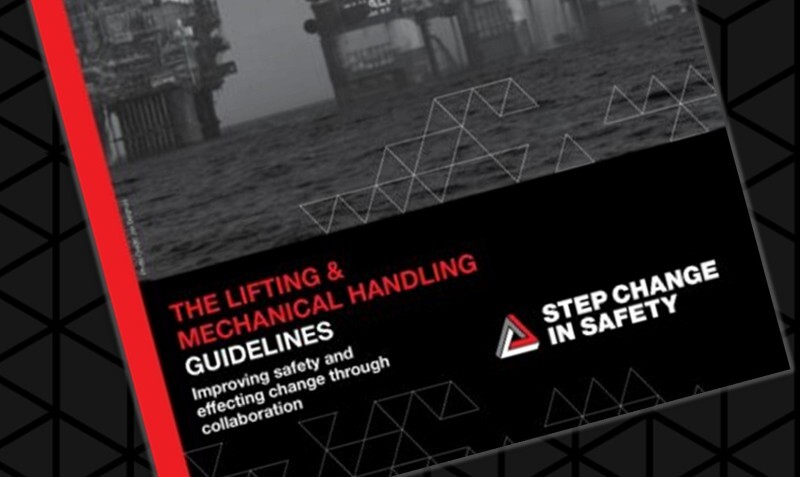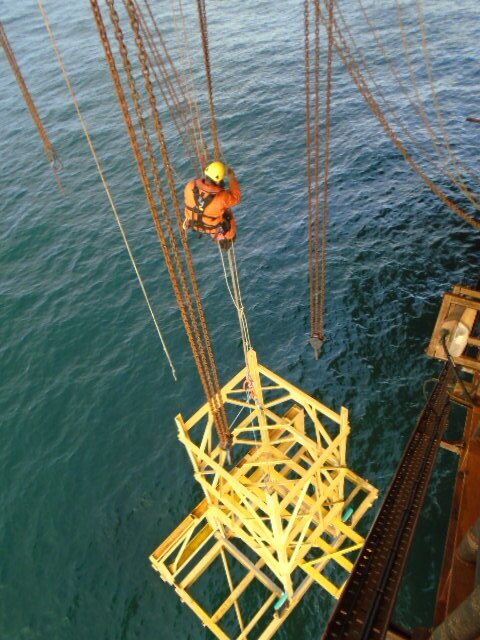Dropped Objects, Sweeps and Working at Height
Dropped objects and falls from height have been a frequent cause of oil and gas industry incidents
During the second quarter of 2021, the focus will be on Safe Lifting Operations and Preventing Falling Objects
Step Change in Safety is committed to making our sector the safest place to work by preventing predictable incidents, working with our colleagues in the industry to achieve that. With that in mind, in 2021 we are introducing quarterly safety themes which focus on a different topic every three months.
From April until June, the emphasis is on reinforcing awareness and techniques around Safe Lifting Operations and Preventing Falling Objects in order to reduce the potential for incidents in these areas. While lifting operation incidents are not the most frequent, they can account for some of the most serious injuries in our industry.
Lifting equipment includes any equipment used at work for lifting or lowering loads, including attachments used for anchoring, fixing or supporting it and regulations cover a wide range of equipment including, cranes, forklift trucks, lifts, hoists, mobile elevating work platforms, and vehicle inspection platform hoists etc.

The guidelines are aimed at anyone involved in lifting and mechanical handling operations, particularly those who risk assess and plan these operations, and the supervisors of the personnel performing them.
The definition also includes lifting accessories such as chains, slings, and eyebolts. Additionally, at site there is also the risk potential for dropped objects while working at height. Lifting tasks can be conducted so frequently that little thought is given to routine tasks and there may not be a clear mental connection with hazardous lifting operations and major accident hazards.
Due to this wide array of lifting and gravity-associated hazards we have chosen to break down such a large subject into manageable bite-sized topics with resources at suit all company sizes and types within the sector. These are:
🔺 DROPS, Sweeps, and Working at Height
🔺 Crane Operations
🔺 Mechanical Lifting
🔺 Lifting Equipment and Hands-Free Tools
While there is generally a good awareness of the requirements of the relevant regulations – job pressures and risk perception can often lead to sub-optimal conditions, and this is when incidents occur.
We hope to use this quarterly theme to provide practical and interesting resources that can be used at site to increase awareness, highlight the potential hazards of routine tasks and ultimately improve safety in lifting operations.
Dropped objects and falls from height have been a frequent cause of oil and gas industry incidents
Crane operations are a critical part of moving equipment to, from and around assets on a daily basis within the oil and gas industry
There are a number of mechanical lifting aids on our sites which if used correctly can significantly reduce the need for manual handling
It's essential that all lifting equipment used onsite is controlled, suitably rated for the task, certified for use, and suitable for its intended application.
"In the energy sector, both offshore and onshore, we carry out hundreds of thousands of lifting operations each year, either by crane or using portable lifting equipment. These lifts weigh anything from 50kgs to 20 tonnes and everything in between. While the vast majority of these lifts are executed safely there are unfortunately a small percentage that are not.
"So, why should we strive to make ALL lifts 100% safe? One of the main reasons is that it will most likely be you, the individual, who is taking part in the lifting operation who will be injured. You are near the moving loads and you are operating the equipment that is lifting or lowering these loads. So, if it falls, who is most likely to get hurt? YOU!
"Another reason is that due to the nature of our industry we are often lifting near live plant, sometimes over live plant, and any dropped load could result in a Major Accident Hazard where many of our colleagues may also be injured. So two very good reasons why we should strive to make every lifting operation 100% safe, and there are many more.
"So please, each and everyone of you who are involved in lifting operations, before starting every lift, stop, step back, take a few seconds to ask yourself: “Can I do this any SAFER; have we considered and controlled every hazard.” Don’t start the lift until you can honestly answer: “YES we have covered everything, this is as safely as it can be done"."
Kenny Lawtie, Lifting Technical Authority / Head of Lifting, Wood PLC

During the first quarter of 2021, the focus will be on Life Saving Rules
During the third quarter of 2021, the focus will be on Major Accident Hazard Understanding
During the fourth quarter of 2021, Personal Responsibility for Safety will be examined
Be the first to receive our news and alerts by signing up to join the Step Change in Safety website